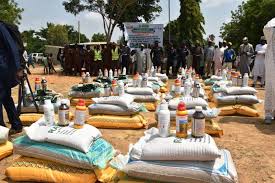The problem of input choice assumes vital importance, particularly when alternatives for producing a given product are available. Most agricultural products are produced with two or more critical inputs.
In this context, substitution of one input for the other at the least cost to produce a given output forms the basis for most decision-making problems. In livestock, grain ration is substituted for forages, and in crop production, herbicides are substituted for human labour, fertilizers for farmyard manure (FYM), etc.
The managerial problem here is to find out the least cost combination of inputs for producing a given output, which is crucial in agricultural finance.
In this article, the relationships between the variable inputs are discussed, along with their relationships with the level of output.
Read Also: Sheep gene insights could help farmers breed healthier animals
Substitution Ratio in Agricultural Inputs

In a previous article, the relationship considered was between a variable input and the output while other inputs were held constant. In this article, the case is considered where there are two variable inputs instead of one.
There is bound to be a relationship between the two variable inputs and, of course, a relationship between the two variable inputs and the output itself. The isoquant is a curve that connects the various combinations of the two variable inputs that can be used to produce the same level of output.
As mentioned earlier, the problem facing the financial manager is to determine which of these numerous combinations of the variable inputs will give the least cost in producing the specified level of output represented by that particular isoquant.
This question cannot be answered until the cost of each of the variable inputs is known. Prices of the variable inputs are therefore brought into the picture.
There is a line called the isocost line. The isocost line connects the various combinations of the variable inputs that can be purchased at the same cost.
“Iso” means equal, and “isocost” means equal cost. Therefore, for the purpose of determining the least cost combination of inputs for producing a given level of output, the first step lies in finding out the substitution ratio of the two inputs in question. This forms an essential part of decision-making in agricultural finance.
Read Also: 17 Medicinal Health Benefits Of Mucuna pruriens (Monkey Tamarind)
Decision Rule in Agricultural Finance
If the Substitution Ratio is greater than the Price Ratio, the total cost of the feed ration can be reduced by moving downwards to the succeeding ration in the table. If the Substitution Ratio is less than the Price Ratio, the converse holds true.
Do you have any questions, suggestions, or contributions? If so, please feel free to use the comment box below to share your thoughts. We also encourage you to kindly share this information with others who might benefit from it. Since we can’t reach everyone at once, we truly appreciate your help in spreading the word. Thank you so much for your support and for sharing!
Read Also: 4 Steps to help an Orange Tree Produce Sweet Oranges

